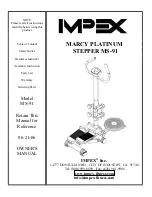
21
Needles
Explanation
Type of fabric
HA x 1
15 x 1
Standard sharp needles.
Sizes range thin to large.
9 (65) to 18 (110)
Natural woven fabrics-wool, cotton, silk,
etc. Qiana. Not recommended for double
knits.
15 x 1/130/ 705H
Semi-ball point needle, large eye.
9 (65) to 18 (110)
Natural and synthetic woven fabrics,
polyester blends. Knits-polyesters,
interlocks, tricot, single and double knits.
Can be used instead of 15 x 1 for sewing
all fabrics.
15 x 1/ 130/705H (SUK)
Full ball point needle.
9 (65) to 18 (110)
Sweater knits, Lycra, swimsuit fabric,
elastic.
130PCL/705H-LR/LL
Leather needles.
12 (80) to 18 (110)
Leather, vinyl, upholstery. (Leaves smaller
hole than standard large needle.
Important Sewing Information
Presser Foot Application Chart
The
is being suggested with certain stitches for more creativity
Presser Foot
Application
Needle
General sewing,
Patchwork stitches,
Decorative stitching,
Smoking, Fagoting,
etc.
Zipper foot (I)
Inserting zippers
Button sewing-on
Buttonhole foot (D)
Buttonhole sewing
(A)
Satin stitch sewing
foot (E)
Overcasting
*
Quilting and Patch-
work sewing
Presser Foot
Application
Needle
Darning/Embroidery
foot*
Darning, Free
embroidery Mono-
gramming
Blind hem stitching
Hemmer foot (K)*
Narrow hemming
Cording foot (M)*
Cording
Invisible Zipper foot* Inserting invisible
zippers
Gathering foot*
Gathering
Walking foot*
This foot helps to
prevent uneven
feeding with very
delicate fabrics
*
* Available as optional accessories
N
ote
twin needle
Zigzag foot (T)
foot (F)
Blindstitch
Button sew-on foot
(H)
Embroidery foot
Overlock
Quilting foot 1/4“
Twin needle
















































